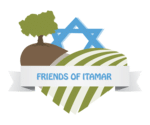Parashat Beshalach 2012 Don’t Be Afraid to Make a Change
Rabbi Moshe Goldsmith on Exodus 13 http://youtu.be/s2524ln5tno
Parashat Bo 2012 – Understanding the New Moon and its Connection to the Jewish Nation
Rabbi Moshe Goldsmith Shemot Exodus 12 http://youtu.be/z-pxAeI_bT8
Parashat Vaerah 2012 – There Is No Chance In This World Everything Is From Hashem
Rabbi Goldsmith on Exodus 6 http://youtu.be/U1lga_2rkJA
Parashat Shemot – If I am only for Myself what am I!
Rabbi Moshe Goldsmith on Shemot Exodus Chapter 1
Parashat Shemot – 2012
Parshat Shemot – January 13 2012 The last portions of the book of Bereishit focus on the life and times of Yosef HaTzaddik, of his influence, esteem and excellence in all realms
Parshat Pekudey – 2011
Parshat Pekudey March 4 2011 “Thus all the work of the tabernacle of the tent of the meeting finished and the Children of Israel did according to all that the Lord commanded
Parshat Vayakhel – 2011
Parshat Vayakhel February 25 2011 Leah Goldsmith Parshat Vayakhel gives the details about how Hashem wants a holy sanctuary, a dwelling place below. This is actually the meeting pl

